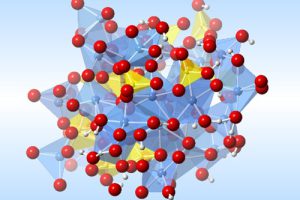
Thanks to the latest advances in computer modelling, an international team of researchers led by the University of Bristol shed new light on the properties of magma found hundreds of kilometers within the Earth.
The study showed water-rich magmas formed in the Earth’s mantle are more fluid and buoyant than previously believed. This enables us predict the amount of water in the Earth’s interior, furthering comprehension of the deep Earth water cycle.
Dr. James Drewitt, Senior Research Associate at the University of Bristol and lead author, said ‘It’s really exciting to be able to explore the nature and properties of magma hundreds of kilometers beneath our feet. Although previous knowledge is limited, it was widely thought these water-rich molten rocks, called hydrous magma, would be denser than the solid rock above them and so would form vast pools of magma at depths close to 400km.’
‘However, we were not convinced by this theory, as it relies on chemical compositions which are unrepresentative of natural magmas, as known from high-pressure laboratory experiments. We wanted to determine the properties of hydrous magmas to model their behaviour, how they flow and where they go after forming in the deep mantle, to provide more accurate insight into the deep Earth water cycle, which is tightly connected to Earth’s habitability.’
The researchers made use of ARCHER, the UK’s national supercomputing service to simulate the physical properties of magma at the extreme conditions on the boundary of Earth’s upper and lower mantle at temperatures up to 1600ºc and 250,000 times atmospheric pressure.
Dr. Drewitt said, ‘Using advanced computational techniques to model hydrous magmas down to the atomic scale, we discovered natural hydrous magmas will be more buoyant and fluid than expected, and will therefore rise through the upper mantle towards the surface, rather like the wax rising in a lava lamp.’
‘By incorporating these findings into global mantle circulation models, we found that over geological timescales water in hydrous magmas was transported from the lower and mid-mantle towards the upper mantle, resulting in a similar mass of water found in all Earth’s oceans combined evenly distributed throughout the mantle of the present-day Earth.’
The three-year study was funded by the UK’s Natural Environment Research Council, and involved Earth scientists and physicists from universities in the US, UK and China.
By Marvellous Iwendi.
Source: University of Bristol